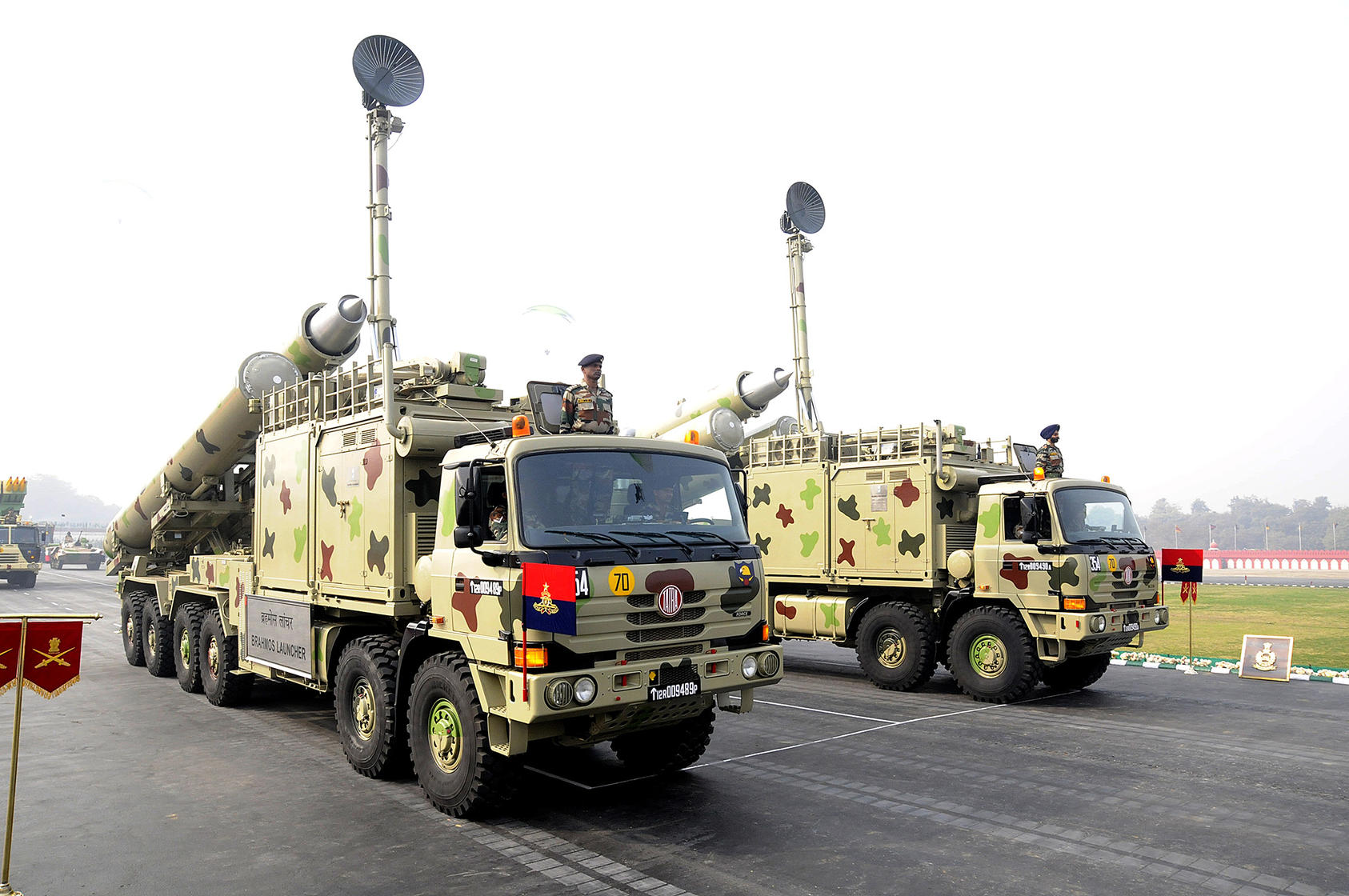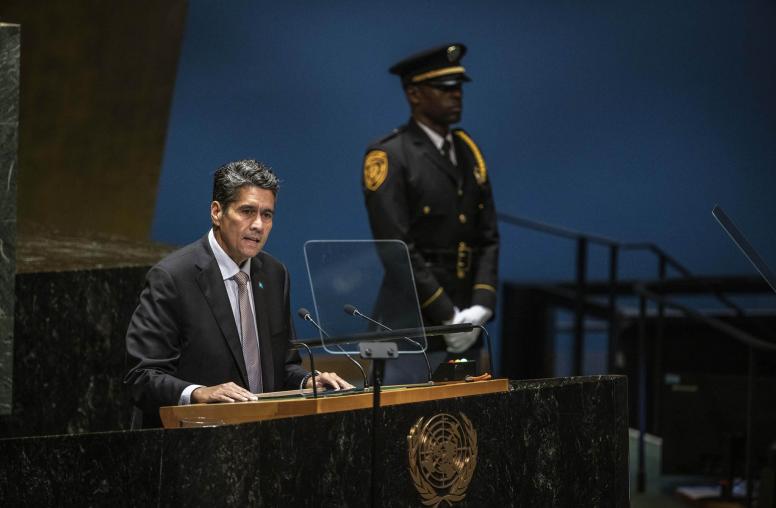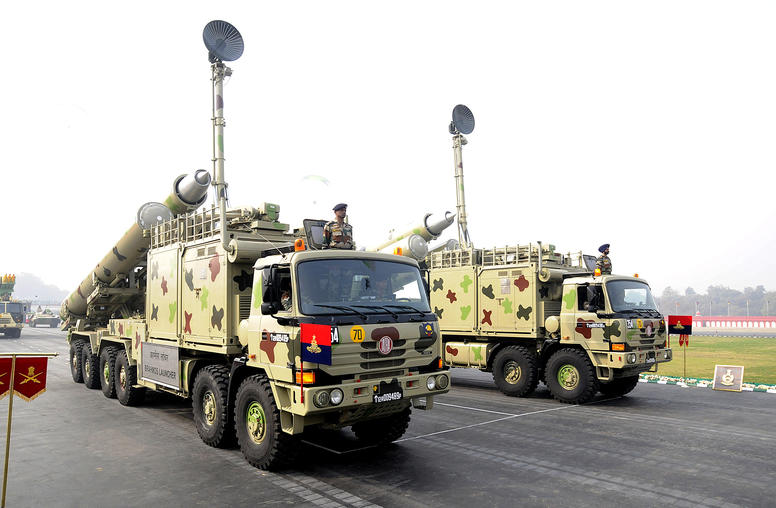Enhancing Strategic Stability in Southern Asia: USIP Senior Study Group Final Report
Executive Summary
Over the past decade, long-standing disputes between the nuclear-armed states of Southern Asia have repeatedly veered into deeper hostility and violence. These regional developments reflect and reinforce new and significant geopolitical shifts, starting with the global strategic competition between China and the United States. In Southern Asia, relations between the United States and Pakistan have frayed even as US-India and China-Pakistan ties have strengthened. The region now faces deepening and more multifaceted polarization. Global competition adds fuel to regional conflict and reduces options for crisis mediation.
This report reviews the challenges posed by changing strategic circumstances in Southern Asia, assesses a range of US policy options, and presents a set of priority recommendations for US policymakers.

Principal Findings
China, India, and Pakistan have developed nuclear capabilities as one way to deter conflict with more powerful adversaries: the United States, China, and India, respectively. Each of the states in Southern Asia is expanding its nuclear arsenal and investing in related delivery systems. All aspire to field nuclear triads with assured second-strike capabilities, but China, India, and Pakistan are at very different stages in this process. In making these investments in national security, each state also threatens its less powerful rivals. The result, a “cascading security dilemma,” encourages arms racing, disrupts regional strategic stability, and heightens the risk that crises could cross the nuclear threshold.
In addition to general arms race dynamics, the introduction of new munitions, more capable delivery systems, and potentially more risk-acceptant doctrinal shifts tend, on balance, to exacerbate strategic instability in Southern Asia. Sophisticated missile defense systems; hypersonic and multiple independently targetable reentry vehicle (MIRV) missiles; and tactical, sea-based (surface and submarine), and dual-capable nuclear systems all raise new challenges for crisis management and raise questions about how they might influence the nuclear strategies and doctrines of regional states.
The potential for conflict between India and Pakistan remains high following the 2019 Pulwama-Balakot crisis. Subsequent diplomacy led to the resumption of a ceasefire along the Line of Control in 2021, but the underlying causes of hostility, including although not limited to the disputed territory of Kashmir, remain. Moreover, India and Pakistan appear to have drawn lessons from 2019 that increase the likelihood that future crises could escalate in dangerous ways, possibly even to the nuclear threshold. All told, 2019 showed important shifts in long-standing positions (by India and Pakistan, as well as China and the United States) and a new willingness by all parties to accept greater risk.
Over the past several years, India’s relations with China have also deteriorated markedly. In the summer of 2020, their long-disputed land border saw the most violent clashes in more than four decades. India and China have since pulled forces away from hot conflict but have not found a way back to the pre-2020 status quo. Both are actively investing in new military capabilities and infrastructure along their inhospitable Himalayan frontier, raising the prospect that future disputes could escalate into even more significant conventional military exchanges. Nuclear use remains unlikely, but it cannot be ruled out, if only as the unintended consequence of conventional military escalation. India-China border tensions are certain to influence their broader bilateral relationship as well as military investments, both conventional and nuclear.
In addition to worrisome trends in bilateral India-Pakistan and India-China relations, India faces the thorny challenge of managing relations with two hostile neighbors (China and Pakistan) that are increasingly close partners. Other regional developments, including in Afghanistan, where Taliban rule is likely to create new opportunities for terrorist groups, further threaten strategic stability in Southern Asia. Ultimately, it is the unpredictable evolution of these dangerous dynamics in combination—India-Pakistan crises, China-India border violence, and resurgent terrorist threats—that should raise concern that inevitable flare-ups could spiral.
The United States has only a limited capacity to influence the behavior of other nuclear-armed states. The overlapping and interconnected rivalries and territorial disputes in Southern Asia further complicate the policy challenge facing Washington. In particular, US policymakers will need to balance competing strategic priorities as they deepen the strategic partnership with India and deter aggression while taking care to avoid actions that could contribute to a regional arms race, greater instability, or crisis escalation.
That said, the United States has in the past played a significant role in regional crisis prevention and mitigation and continues to have a wide range of policy tools at its disposal. This report systematically assesses a range of options for resolving, mitigating, or better managing regional disputes; enhancing regional strategic stability through deterrence, reassurance, and other diplomatic or technical means; and improving crisis management tools and practices to reduce the likelihood that any specific crisis escalates past the nuclear threshold. This assessment is not intended to be a one-time effort. As the United States faces new and evolving circumstances, it should continue to develop policies to address the motives, new capabilities, and processes that expose Southern Asia to a significant risk of nuclear war.
Priority Recommendations
To resolve or mitigate core disputes in Southern Asia that threaten regional peace, the United States should continue to pursue diplomatic initiatives to encourage reduced tensions between India and Pakistan. It should also prepare to seize opportunities for tactical progress, for instance, on ways to remove forces from specific points of friction, such as the Siachen Glacier, even if core disputes prove intractable. The United States should support long-term regional economic development projects to build material incentives and more vocal constituencies favoring regional peace.
Additionally, the United States should look for new diplomatic opportunities to manage India and China’s border dispute, including in US talks with China as well as coordination with US allies and partners to develop new economic and financial tools aimed at deterring Chinese territorial aggression. The United States should use its ongoing negotiations with the Taliban and economic and financial leverage with Pakistan to reduce threats to regional stability posed by terrorists based in Afghanistan and Pakistan, in particular by naming anti-Indian terrorists as priority US concerns and targets.
To enhance prospects for strategic stability in Southern Asia, the United States should devote renewed attention to nuclear risk reduction measures, starting with the establishment of a dedicated, secure, and redundant India-Pakistan nuclear hotline, supported by bilateral agreements and practices, and should urge both India and China to enter strategic stability talks with each other. Additionally, the United States should raise the idea of a new transregional forum on regional and global strategic stability that would include an “N-7” (China, France, India, Pakistan, Russia, the United Kingdom, and the United States) to discuss and strengthen stabilizing nuclear norms. Washington should also deepen its defense cooperation with New Delhi in ways that contribute to India’s capacity for territorial defense and a stabilizing conventional and nuclear deterrent without exacerbating the regional arms race or increasing the likelihood of nuclear crises.
To better manage crises between the nuclear-armed states of Southern Asia, the United States should prepare its policymakers for complex nuclear crisis diplomacy in the region by conducting gaming exercises within the intelligence community; developing a generalized policy playbook for India-Pakistan, India-China, and overlapping India-Pakistan-China crises; and routinely sharing insights from these planning documents with all incoming senior officials in relevant US government agencies, embassies, and bases.
Additionally, Washington should work to improve its indicators and warning for regional crises and prepare to share information publicly and with regional actors to combat disinformation in instances where doing so could prevent or de-escalate a conflict. It should offer to help New Delhi enhance the resilience of its information and communications channels. It should also coordinate with trusted third parties to better prepare for crisis diplomacy so that they can serve as intermediaries and honest brokers in future crises.
Study Group Members
Co-Chairs
- Daniel Markey, United States Institute of Peace
- Andrew Scobell, United States Institute of Peace
- Vikram J. Singh, United States Institute of Peace
Senior Study Group Members
- Zack Cooper, American Enterprise Institute
- Toby Dalton, Carnegie Endowment for International Peace
- Robert Einhorn, Brookings Institution
- M. Taylor Fravel, Massachusetts Institute of Technology
- Kyle Gardner, George Washington University
- Jack Gill, National Defense University
- Sameer Lalwani, Stimson Center
- Antoine Levesques, International Institute for Strategic Studies
- Shuja Nawaz, Atlantic Council
- Ankit Panda, Carnegie Endowment for International Peace
- Lynn Rusten, Nuclear Threat Initiative
- Lora Saalman, Stockholm International Peace Research Institute
- Yun Sun, Stimson Center
- Elizabeth Threlkeld, Stimson Center
- Joshua White, Johns Hopkins School of Advanced International Studies
- Diana Wueger, Naval Postgraduate School
Project Executive Directors
- Tamanna Salikuddin, director of South Asia programs, United States Institute of Peace
- Jennifer Staats, director of East and Southeast Asia programs, United States Institute of Peace
Research Team and Secretariat
Colin Cookman, Max Mellot, Asfandyar Mir, and Zaara Wakeel, United States Institute of Peace
Study group members express their support for the general findings and recommendations reached by the group, but do not necessarily endorse every statement or judgment in the report. They participate in the study group in their personal capacities; the views expressed are their own and do not necessarily represent the views of their institutions or employers.




